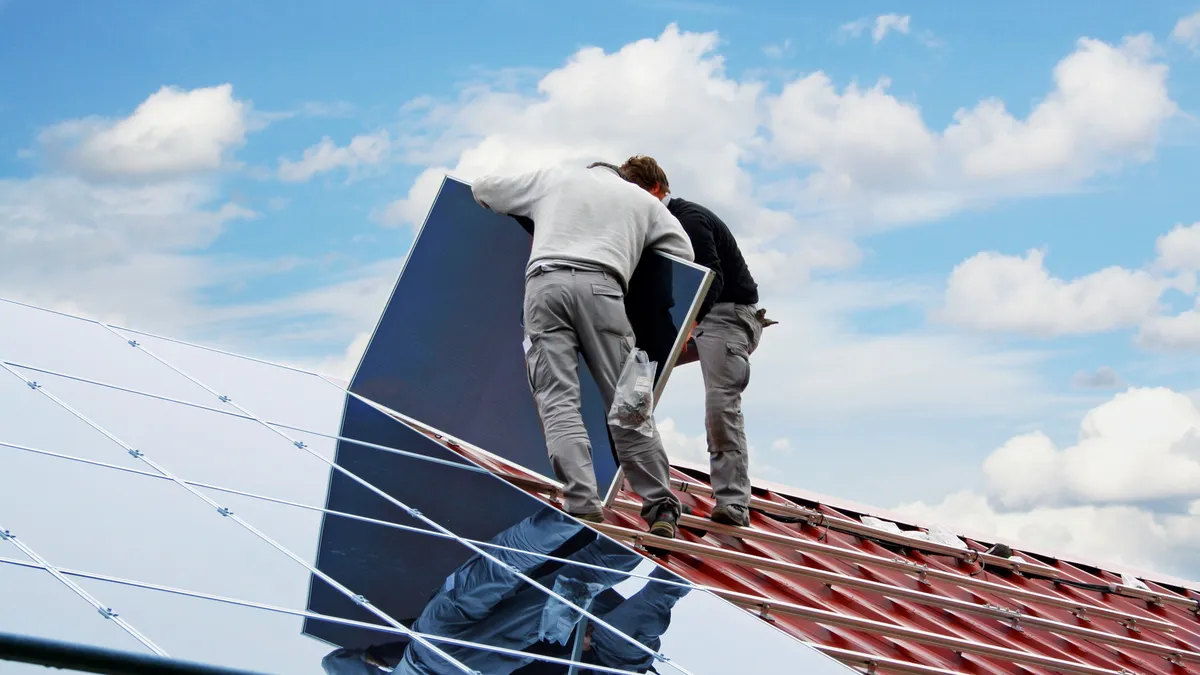Dive Brief:
- Solar advocate Utah Clean Energy says the state needs to make changes to its energy market in order to encourage renewable and carbon-free energy resources, including fewer restrictions on rooftop solar, a wider array of financing options, and incentive options.
- The report also recommends streamlining Utah's interconnection standards—which were last updated in 2010—in order to bring more transparency to local grid conditions in order to aid installers.
- But an official from UCE told S&P Global that the recommendations to help the market grow all take a backseat to Rocky Mountain Power's efforts to cut retail net metering rates.
Dive Insight:
Solar energy is booming in Utah, but advocates warn that if the state wants that trend to continue, there are certain things it needs to do. The list is comprehensive, listing recommendations from updated interconnection processes and standards to revising local zoning rules to allow more access to rooftop solar. There's also a suggestion for community-shared solar as an option for people unable to access solar energy otherwise.
But UCE Executive Director Sarah Wright told SNL, "the big elephant in the room is the utility business model."
Further expanding on this observation, the report noted "The cost of rooftop solar has fallen dramatically and both customers and utilities are now active participants in today’s electric grid. It is critical that we plan for a future where customer-deployed resources are widespread and seek strategies for their integration that embrace customer choice, maximize benefits, and keep costs low for all customers."
Those goals could be jeopardized if Rocky Mountain Power succeeds in reducing retail rate net metering and attach additional fees for distributed solar customers.
RMP has proposed cutting net metering rates and instituting additional fees on distributed generation customers. According to the utility, customers with panels are underpaying their cost of service by roughly $400 annually, totaling $6.5 million in costs that are shifted onto non-solar customers. It is a familiar argument playing out in several states, and the solar industry says lower rates could bring growth of the resource to a halt.
"Rather than viewing distributed solar as a barrier to profits, utilities should be able to respond to, integrate, and facilitate new technology and customer choice into their business model," UCE said in the report.
The report also recommended performance-based incentives tied to solar goals, revenue decoupling and avoiding "solar-specific rates."
"Rate designs that apply only to distributed generation customers result in missed opportunities to engage all utility customers in efforts to reduce utility system costs, especially costs associated with system peaks," UCE concluded.
Unfortunately for the solar industry, some changes could be coming. Utah lawmakers reached a compromise that would phase out the state’s solar tax credit by 2021, using a step-down approach that limits how much of a tax credit each solar customer can receive. The bill recently passed committee and now heads to the state’s full House of Representatives for debate.














